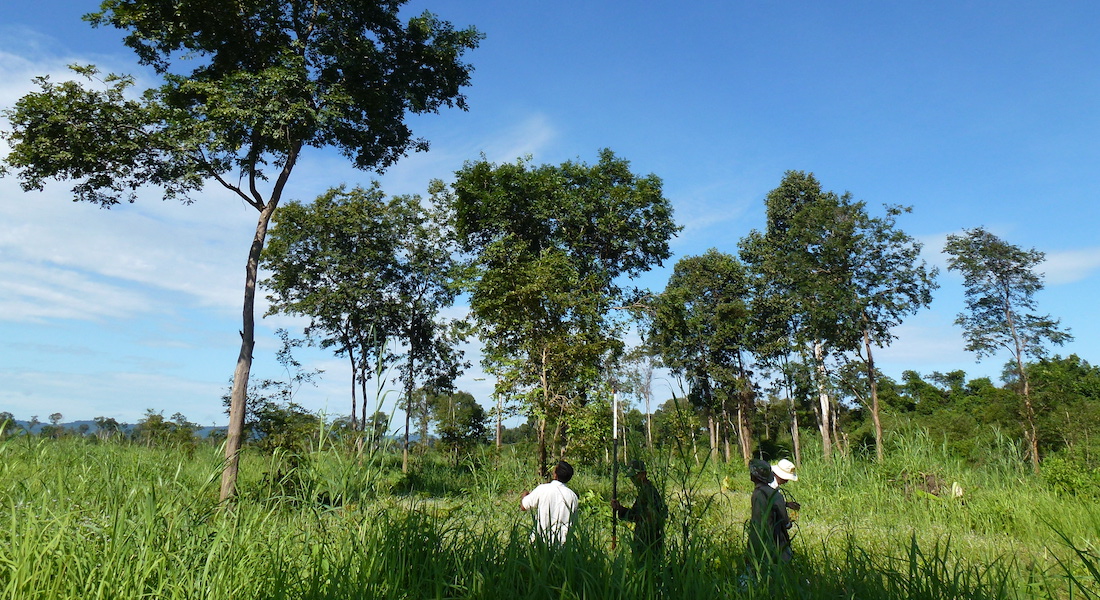New PNAS Study Reveals Genetic Insights into Conservation of Critically Endangered Asian Rosewoods
A groundbreaking new study titled "Range-wide differential adaptation and genomic offset in critically endangered Asian rosewoods" published in the prestigious journal PNAS, sheds light on the genetic mechanisms driving the survival of highly trafficked and critically endangered Asian rosewoods across their natural habitats.

Cross-collaborative synergy
The study, which was a collaborative effort between geneticists, ecologists, and conservationists from multiple institutions, including Assistant Professor Ida Hartvig from Center for Evolutionary Hologenomics, University at Copenhagen, offers a comprehensive examination of the genomic diversity and adaptive traits of Asian rosewood species (Dalbergia spp.).
The two rosewood species in focus Dalbergia cochinchinensis and Dalbergia oliveri are the world's most trafficked and hence endangered wild product in the billion-dollar global wildlife trade since 2005. The authors developed an integrated range-wide genomic data and climate model in order to design climate-resilient conservation programs for the species, including a newly developed tool that identifies the best seed sources for assisted migration and restoration efforts of the two species.
Professor Ida Theilade from Department of Food and Resource Economics, University of Copenhagen highlights the collaborative effort behind the study: “This project is the result of close collaboration between government staff, practitioners and conservationists working on the ground and geneticists. Engagement of local staff and field researchers enabled collection of DNA samples from remnant populations, the University of Oxford researchers performed the genetic analyses and made the results available including a web-based tool useful in the next generation of hands-on conservation efforts for these precious species”.
A high-impact study
The research involved the analysis of genetic data from rosewood populations spanning their entire range. The findings reveal a complex interplay of genetic adaptation and environmental pressures that has enabled certain populations to survive and thrive in diverse ecological conditions. This study not only enhances the understanding of the evolutionary history of these endangered species but also provides crucial insights for their conservation.
One of the most remarkable findings is a considerable "genomic offset" detected in both species – representing a mismatch between current genomic adaptive variation and that expected to be essential for adapting to future climatic conditions in the region. This phenomenon highlights the complexity of adaptation and the need for a holistic conservation approach that accounts for both current genomic diversity and gene-environmental interactions under climate change.
New hope for Asian rosewoods
This new study has the potential to draw global attention, sparking discussions among scientists, conservationists, and policymakers on how to leverage these insights for the protection and restoration of Asian rosewoods. With their unique genetic adaptations unveiled, these critically endangered species might have a better chance at survival in the face of ongoing environmental challenges, offering hope for their long-term conservation.

“Dalbergia cochinchinensis and D. oliveri have become preferred species planted by local farmers in Indochina. As the destruction of natural forests continues unabated, trees on farms are an important vehicle for conservation of rosewoods. To many low-income households, trees on farms act as a security in times of financial crises and shocks including for female headed households. The web-based application seedeR will help farmers select seed sources matching planting sites and thereby secure better income from family-based tree-planting activities”, says Ida Theilade, who has been involved in conservation efforts in the region for decades.
“The pressure on these rosewood species is immense, from illegal logging, habitat destruction and climate change, and it is no longer likely their populations can recover in their natural habitats without interventions. This study is an important step towards recovery of two of the world's most trafficked species and provides a model for the conservation of other endangered tropical tree species too. I hope it will pave the way forward for more genomic-based studies of tropical species, improving our chances of conserving the biodiversity in these important ecosystems.” ends Ida Hartvig.
Read the article in PNAS here.
Contact
Assistant Professor Ida Hartvig
